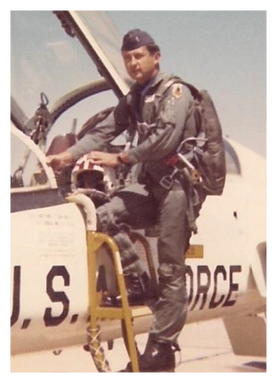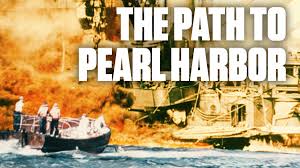 By Dick Martin Where was Daryl Heusinkveld from May 11, 1969 until May 13, 1970? The Air Force has always confirmed that he was an officer and a pilot during that time. His family confirms that he was nowhere close to home. The rumors are strong that he spent the entire year dodging enemy anti-aircraft rounds flying 213 secret combat missions in a prop A1 Sky raider into Laos. But don’t ask the Air Force about Daryl’s whereabouts because they, officially, have no knowledge of any activity in Laos. Better to ask Ho Chi Minh or General Giap as Daryl and his fellow pilots were taking a terrible toll of the enemy on the Ho Chi Minh Trail and in support of the Laotion Army.
0 Comments
by Dick Martin  When researching the “surprise” attack on Pearl Harbor, one can only wonder how the Japs kept it a surprise. Breaking their secret codes had much to do with it. Japanese ally, Germany, believed that its secret codes for radio messages were indecipherable. However, the meticulous work of code breakers based at Britain’s Bletchley Park cracked the secrets of German wartime communications, and played a crucial role in the final defeat of the AXIS Powers. By the end of 1941, the United States was already reading the Japanese intelligence messages (Magic). There were those who claim President Roosevelt knew the attack was coming but needed the support of the Isolationists, so he allowed the attack to proceed. I doubt this is true; however, there is plenty of evidence to support it. Below is a chronological list of events that should have put the USA on notice that something big was coming: November 7, 1941 – Admiral Yamamoto issues Operation Order no. 2 setting December 8, 1941; (December 7 Hawaiian time) as Y day for the attack of Oahu. November 10, 1941 – Ambassador Nomura arrived at the White House to present the Japanese “A” proposal for maintaining peace in the Western Pacific. The United States had already broken the code so they already knew what was in the “A” proposal and also what was in the “B” proposal that was yet to come. November 16, 1941 – Magic intercepts a cable from Tokyo to Ambassador Nomura advising him to “fight harder.” November 20, 1941 – Ambassador Nomuro presents Tokyo’s “B” proposal. Again, because of Magic, the White House knew it was coming and what it consisted of so they were ready to turn it down. “At this point, I think it is necessary to mention that after four years of fighting and the loss of a million soldiers on mainland China, the Japs were not going to go along with any proposal that denied them of any of their hard-won Chinese conquests; and America was not going to endorse a proposal that allowed Japan to keep any soldiers in China. With no room for compromise this alone should have made it obvious that Japan had been pushed into a corner and had to do something big. Even if the USA knew the Japs were going to strike, they would have been shocked that it was Hawaii rather than the Philippine Islands. Since the turn of the century until the Japanese strike at Pearl Harbor in 1941, Washington thought the Philippine Islands were in a position to check any Japanese expansions South, West or North and spent their time, assets, and effort focusing on the Philippine Island as a block to Jap expansion.” That Japan struck first at Pearl Harbor instead of the Philippine Island may have been the biggest surprise of all to the US’s military leadership. November 22, 1941 – Magic intercepted Tokyo’s message to Nomuro that the deadline for negotiations was four days, December 7, 1941. Japs get order to sail for the Hawaiian Islands. November 24, 1941 – The Chief of Naval Operations flashed warning of “Surprise and Aggressive Movements” by Japan. November 25, 1941 – Roosevelt looks for ways to get Japan to take first shot in a shooting war. November 26, 1941 – Admiral Nagumo’s fleet strike force puts to sea. November 26, 1941 – Prime Minister Tojo gives his cabinet an ultimatum for war. November 27, 1941 – Garrison Commander General Short received an alert stating “Measures should be carried out so as not to alert Civil Population.” November 29, 1941 – Magic reveals a report from Ambassador Oshima that German Foreign Minister Ribbentrop had pledged, ¨Should Japan become engaged in a war against the United States, Germany of course, would join the war immediately.” November 30, 1941 – Japan continues with its strike force headed for Hawaii. December 1, 1941 – To maintain its empire, a half hour before they strike Pearl Harbor, Japan sees no alternative to war and schedules to reject America’s conditions. December 2, 1941 – The Pacific Fleet Combat Intelligence Unit discovers that all Japanese warship call signs have been changed, a sure sign they are up to something big. December 3, 1941 – Admiral Kimmel, Pearl Harbor Commander, received highly reliable information from Naval Intelligence in Washington that Magic had intercepted messages the day before instructing all Japanese embassies to begin destruction of codes and sensitive documents. December 4, 1941 – The Navy’s listening post at Cheltenham Maryland picked up what the operator reported as the “East Wind Rain” war warning message. December 5, 1941 – The Japanese envoys summoned to the State Department could not explain why large convoys were moving across the South China Sea. December 6, 1941 – The Japanese reject America’s ten-point proposal for peace. December 7, 1941 – Lt. Commander Kramer intercepts a message describing the movement of ships in Pearl Harbor. No action is taken. Technically, the Army and Navy personnel are on full war alert, but alerts had, by now, become so frequent as to be nothing unusual. Too many alerts, too much intelligence pointing to the impending Japanese attacks toward the western side of the Pacific, too great a reliance on Magic information, and too logical an analysis of Japanese military intentions, with a consequent failure to accord importance to the last minute Pearl Harbor clues allowed Adm Kimmel and General Short to sleep much too soundly that night. The Japanese task force closes in to 230 miles from Pearl Harbor. At 3:50 am, periscopes are sighted off the Harbor mouth. No action is taken. US radar spots the Japanese task force off Kahuku point, but no action is taken. At 4 am, Adm Kramer’s Purple machine intercepts a message to Amb Nomuro directing him to deliver Japanese peace proposal “B” at exactly 1 pm. At 0530, Gen Marshall sends an urgent dispatch to Hawaii, “Just what the significance of the hour 1300 may have we do not know but be on the alert accordingly.” Instead of sending the message to the Navy by Naval Radio, Stark sends it on with the words “Inform Navy “at the top. At 0637 submarine is spotted at Pearl Harbor and attacked with depth charges and gun fire. At 7:02, the attack by the Japanese strike force on Pearl Harbor has begun. Observation: The conduct of Japanese soldiers towards the Chinese was horrible. Their conduct, alone, warranted severe retribution. That the US wanted to keep China as an “Open Door” nation with its billion people as a market was tough to ignore. Japan considered the Pacific west of Hawaii to mainland China as its Co-Prosperity Sphere. It felt it had a right to claim this area for its own market to exploit. In retrospect it is hard for Americans to argue with this logic, since by virtue of the Monroe Doctrine, America’s Co-Prosperity Sphere included much more territory, ie the Western Hemisphere! That is not to say, I feel bad for the Japanese. In my opinion, they deserved what they got. They brought the entire WWII disaster down on themselves; but they do seem to have a point. Like most wars, there are other much more peaceful ways for humans to solve their problems. Taken from information found on Wikipedia and John Costelo’s book “The Pacific War.” |
Categories
All
Archives
October 2023
|